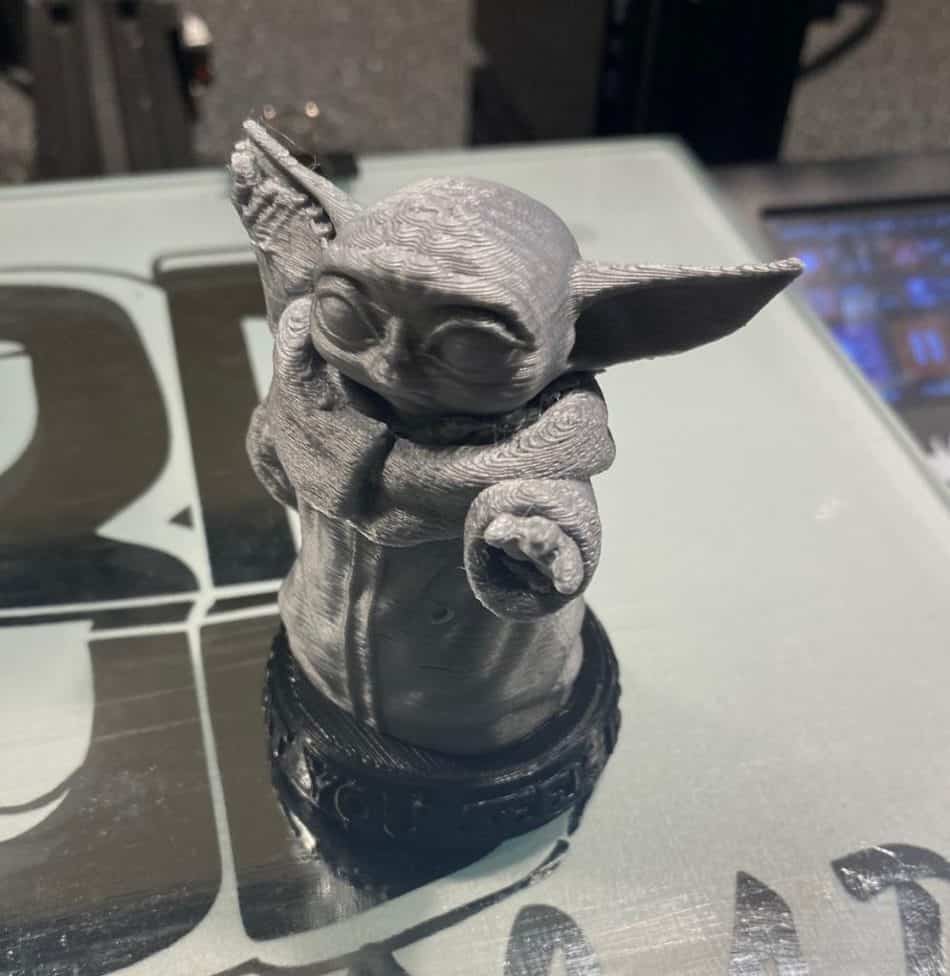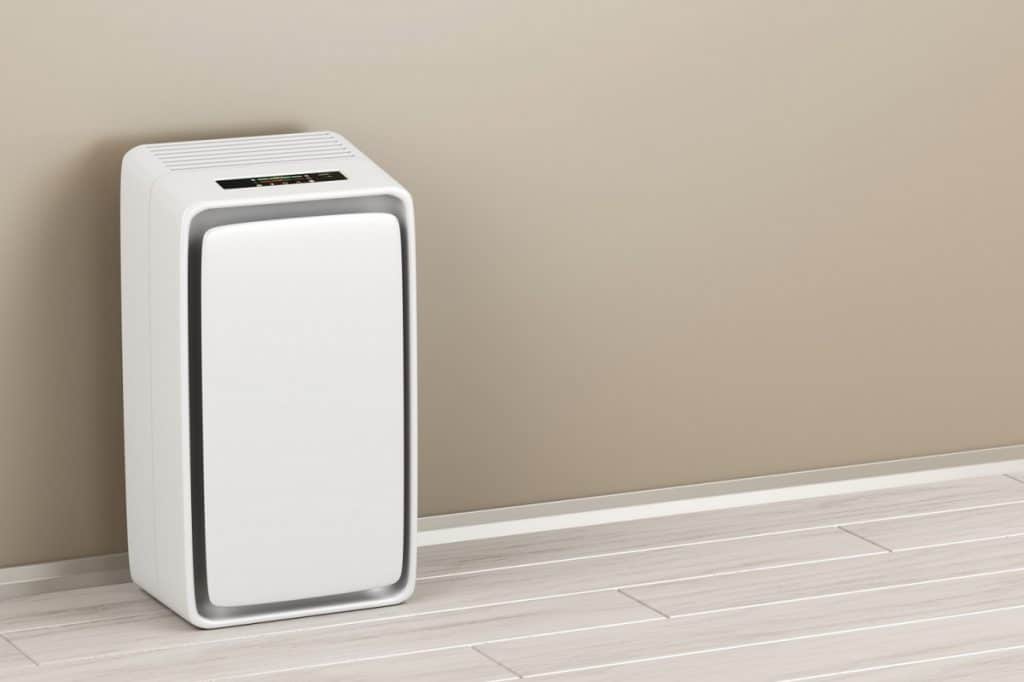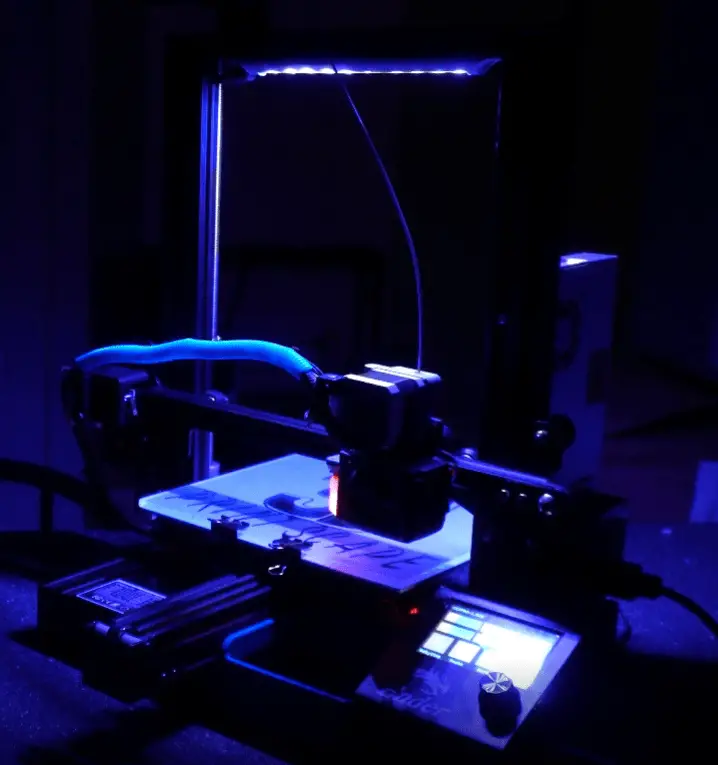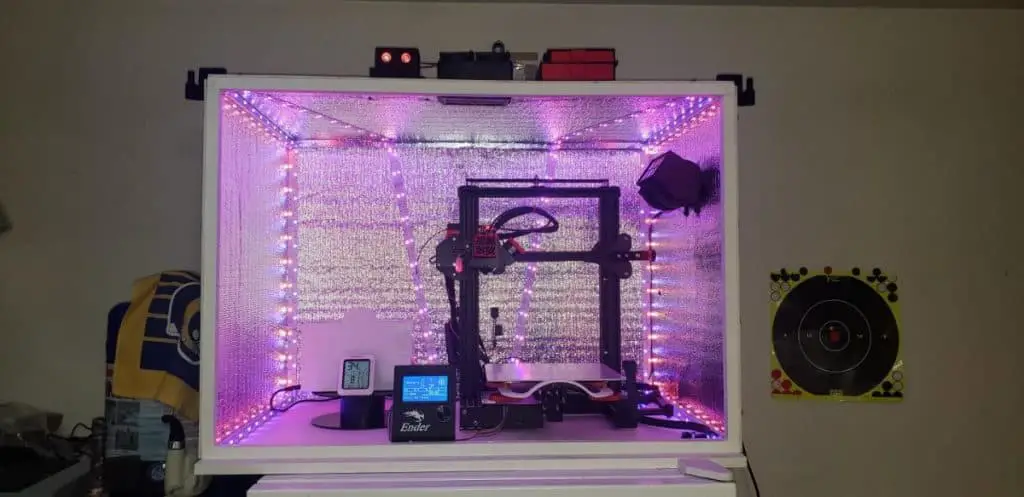One of the biggest health and safety concerns surrounding 3D printers comes from fumes. The printer melts the plastic from the filament reel, and the longer the plastic melts, the more fumes that accumulate. Particularly the fumes like ABS and Nylon pose a danger since they emit high levels of styrene, a suspected carcinogen, that is already known to cause headaches, drowsiness, and fatigue. This danger should highlight a good reason for ventilation.
How much ventilation does a 3D printer need? Opening a window or door, along with an air purifier, in an enclosed space will provide enough ventilation in most cases, but large 3D printers may require more ventilation since they operate for longer periods that may be up to several days and accumulate a greater number of toxins.
If you’d like to learn more about ventilation and your 3D printer, keep reading for further information.

Enclosed Spaces vs Open Spaces
Enclosed spaces require more ventilation because it doesn’t vent as well and may accumulate more hazardous fumes. The danger of toxic fumes in an enclosed space can also be that they would displace the oxygen in the room causing suffocation. Excessive heat in the space from the 3D printer may cause heatstroke.
Some of the most common environments for a 3D printer in an enclosed space include:
- Bedroom
- Living room
- Basement
- Workshop
With enclosed spaces, you must especially exercise caution with small rooms because of how the toxic fumes can build up much faster. Even in a large room, you should take precautions. Some people use a window fan to blow the fumes out. This action eliminates the unpleasant odor that you might smell when printing.
Open spaces, on the other hand, don’t pose as much danger because the gases don’t accumulate, and you have plenty of cross ventilation to keep the fumes from building up. For example, garages reduce the risk of fumes. You can open the door to let the toxic fumes out and keep them from building up.
An open space is an ideal setting for 3D printing, but not everyone has access to it, which makes an enclosed space necessary. For those situations, choose the larger room to allow for the most ventilation. Small rooms can accumulate toxic fumes faster and pose a greater risk.
Use an Air Purifier in Enclosed Spaces
Most air purifiers for 3D printing will feature two types of filters to lower the pollutants in the space. The first and most common air purifier that you will encounter is the HEPA filter. Experts rank this as the international standard of air filtration. They must comply with international standards on air filtration. To put it into perspective, the air filter must remove 99.97 percent of the pollutants at 0.3 micrometers in size.
HEPA filters have an advantage in removing the toxic fumes from spaces with 3D printers because of how they can remove 100 percent of the smaller pollutants under 0.3 micrometers. A 3D printer will produce pollutants in a variety of sizes, but the smallest particles will be at 0.01 micrometers.
Second, you have the Carbon Activated filter. This air purifier does especially well with removing gaseous pollutants like odors and VOCs. The HEPA and Carbon Activated filter often work best in partnership with each other. Due to that, you may want to look for an air purifier that will include both types to cut the most pollutants from the 3D printer. Be aware of how a carbon-based purifier will require replacement every three to six months.
The next important thing is to look for an air purifier rated for a room area rated slightly larger than yours to guarantee it eliminates the most pollutants.

Can You Safely Put a 3D Printer in Your Room?
You need some level of ventilation in the room with an open window being the minimum. Along with that, we wouldn’t advise putting a 3D printer in your bedroom. It ranks as one of the worst locations.
Most experts today would call it safe, but we don’t understand the long-term effects of exposure. PETG and PLA plastics may do all right, but ABS can put out harsh chemicals that you wouldn’t want in your living space, much less in your bedroom. The best location to put a 3D printer is somewhere out of the way like a spare bedroom or office with good ventilation.
Beware of PLA because most think of it as safer to breathe in, but it can still shed VOCs and nanoparticles.
Best Well-Ventilated Areas for a 3D Printer
Most 3D printers at the hobbyist level won’t require a ton of ventilation, but you do want some. Let’s have a look at the best places to put a 3D printer. The garage ranks as the perfect location for 3D printing because the ventilation is perfect, especially for ABS printing. Keep in mind, 3D printers could be seen as a high-ticket item targeted by burglars, and you may want to keep it out of sight in the garage.
Your next best location would be an open-air workshop since it takes away the noxious fumes. Beware of an enclosed workshop without good ventilation.
The last best location is a home office or spare room with the window open for ventilation and an air purifier in the room. We would advise against putting a 3D printer in your living quarters or a bedroom because of how it exposes you to fumes over a long duration. Even the fumes thought to be less deadly are still potentially dangerous. We don’t understand the long-term effects of the fumes from 3D printing.

Some Models Don’t Require as Much Ventilation
Several models include exhaust ventilation or filtration. This design eliminates the need for ventilation where you might only need a window opened. Pay attention to the odor in the room because that can indicate the fumes built up. While 3D printers with exhaust ventilation may lower the need, you can never harm yourself by including as much ventilation as possible. If you have the option to create more ventilation, it makes sense to do so.
How to Use Enclosures
An enclosure will ventilate the 3D printer, so you want to have one if possible. Connect the vent from the chamber to the outside. Having this enclosure matters because of how it ensures that the surrounding air stays clean.
The airtight enclosure will come equipped with a carbon filter meant to purify some of the smaller fume particles. Most airtight enclosures will use a carbon filter, a hose, and a fan that runs outside the home. The fan directs the toxic fumes out of the home in what has become known as a negative pressure chamber.
Important to note, one of the best things that you can do to ventilate it would be if you were to seal the enclosure for air tightness. Be aware of how even if the fumes have no odor, it could still have potentially negative consequences on your health over time.

Building a Ventilation System for Your 3D Printer
If you plan to build a ventilation system, you want to do it right. Hiring a professional guarantees that the fumes won’t return to the room. An improperly constructed ventilation system risks the fumes coming back into the room. For hobbyists, they may not need to worry because of how hobbyist 3D printer don’t throw out as much for fumes. Someone getting into 3D printing professionally may want to consider a ventilation system because they will work with the fumes daily. They want to minimize the risk of developing health problems, which some of the fumes are known to cause.
Related Articles
- 3D Printer Enclosure – Do I Actually Need One?
- Create a Temperature Tower Using Cura – The Easy Way
- Cura Profiles
- 3D Printer Filament Storage Options
- All About 3D Printer Plastic
- Can a 3D Printer Print Anything?
Conclusion
How much ventilation a 3D printer needs will largely depend on its size and if a filtration system was built in. As a warning, never leave 3D printers unattended because of how they pose a fire hazard. Some examples exist where the printer caught fire because of a heated bed failure or faulty wires. You want to keep a close eye on it, and during that time, you need good ventilation.
Make sure you check out our YouTube channel, and if you would like any additional details or have any questions, please leave a comment below or join us on Discord. If you liked this article and want to read others click here.
